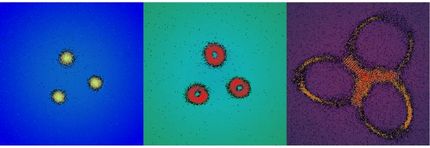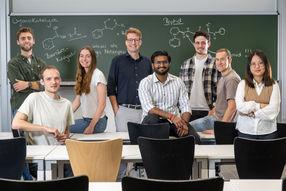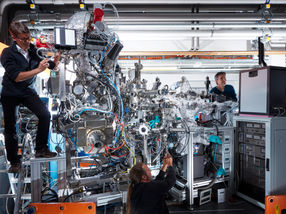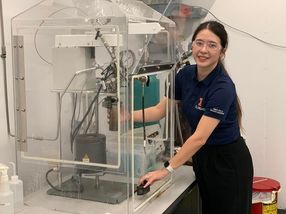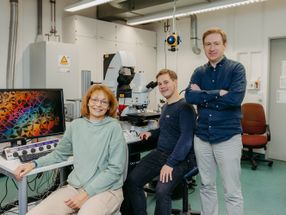Demonstrating Feshbach resonances between a single ion and ultracold atoms
Researchers study the interaction between lithium atoms and barium ion isolated in ultrahigh vacuum and trapped using light traps
Advertisement
A team led by Prof. Dr. Tobias Schätz, Professor of Atomic and Quantum Physics at the Institute of Physics at the University of Freiburg, Dr. Pascal Weckesser, Fabian Thielemann and colleagues, demonstrate magnetic Feshbach resonances between a single barium ion and lithium atoms at near absolute zero temperature. The researchers found that depending on the strength of the external magnetic field, the expansion of the ion and atoms can be controlled. “At these ultracold temperatures, the collisions between particles reveal their quantum mechanical nature,” explains Schätz. “Our research has shown that we're learning a bit more about the possibilities for controlling the quantum mechanical properties of wave-particle duality.” The group published their findings in the journal Nature.
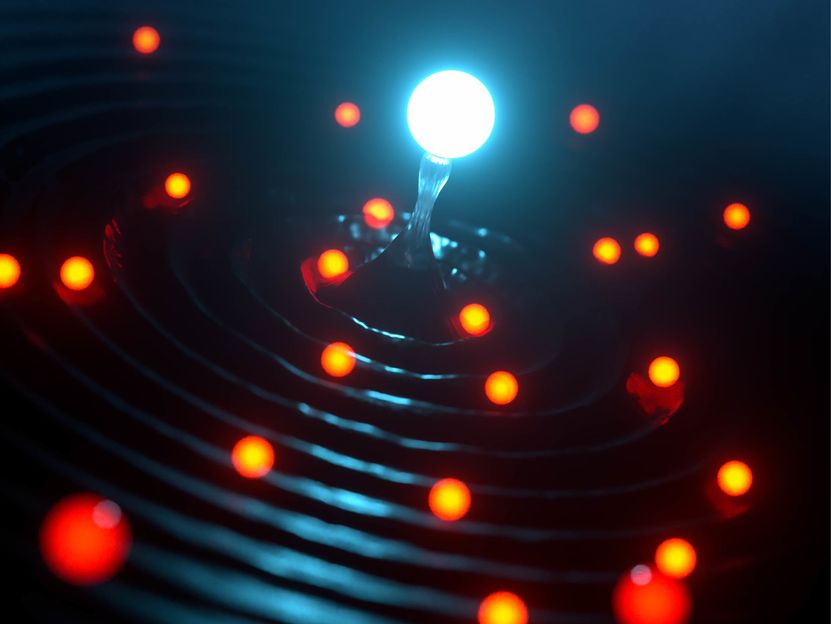
Artistic impression of an individual ion interacting with several atoms with a wave-like character.
Ella Maruschtschenko, Universität Freiburg
Quantum effects dominate at ultralow temperatures
In classical physics, the molecular formation of atoms and ions usually slows down with decreasing temperature until it finally gets so cold that the individual particles stand still and no collision or reaction can occur. However, the laws of quantum physics predict that at ultralow temperatures, quantum effects dominate rather than classical laws, and the collision of atoms and ions suddenly follows different rules. In the quantum realm, where the so-called wave-particle duality prevails, an ultracold temperature - just above absolute zero at -273.15 degrees Celsius - leads to an increase in collision rates. The reason is that the particles can no longer be described as colliding spheres, but as wave packets that can superimpose, amplify or cancel each other out like water waves.
Feshbach resonances despite stronger interaction
The superposition of the waves gives rise to resonances, which the Freiburg researchers studied. “Among other things, we found Feshbach resonances between barium ions and lithium atoms by controlling their interaction processes with the help of a magnetic field,” says Schätz. Feshbach resonances have previously been demonstrated in collisions of slow atoms. However, the research group was now able to do so in a significantly different regime of strong interaction prevalent due to the ion’s charge. In addition to magnetic fields, the scientists used ultrahigh vacuum and cages made of light in their laboratory to isolate the laser-cooled atoms and ions.
“Basic research on quantum mechanics is now increasingly leaving the lab and entering the real world. By studying the effects under idealized conditions in the lab, we can better understand them and use them in a controlled, wide-ranging way – curiosity driven and by the perspective of controlling and increasing the efficiency of chemical reactions, up to finding new ways for charge flow in solids,” says Schätz.



